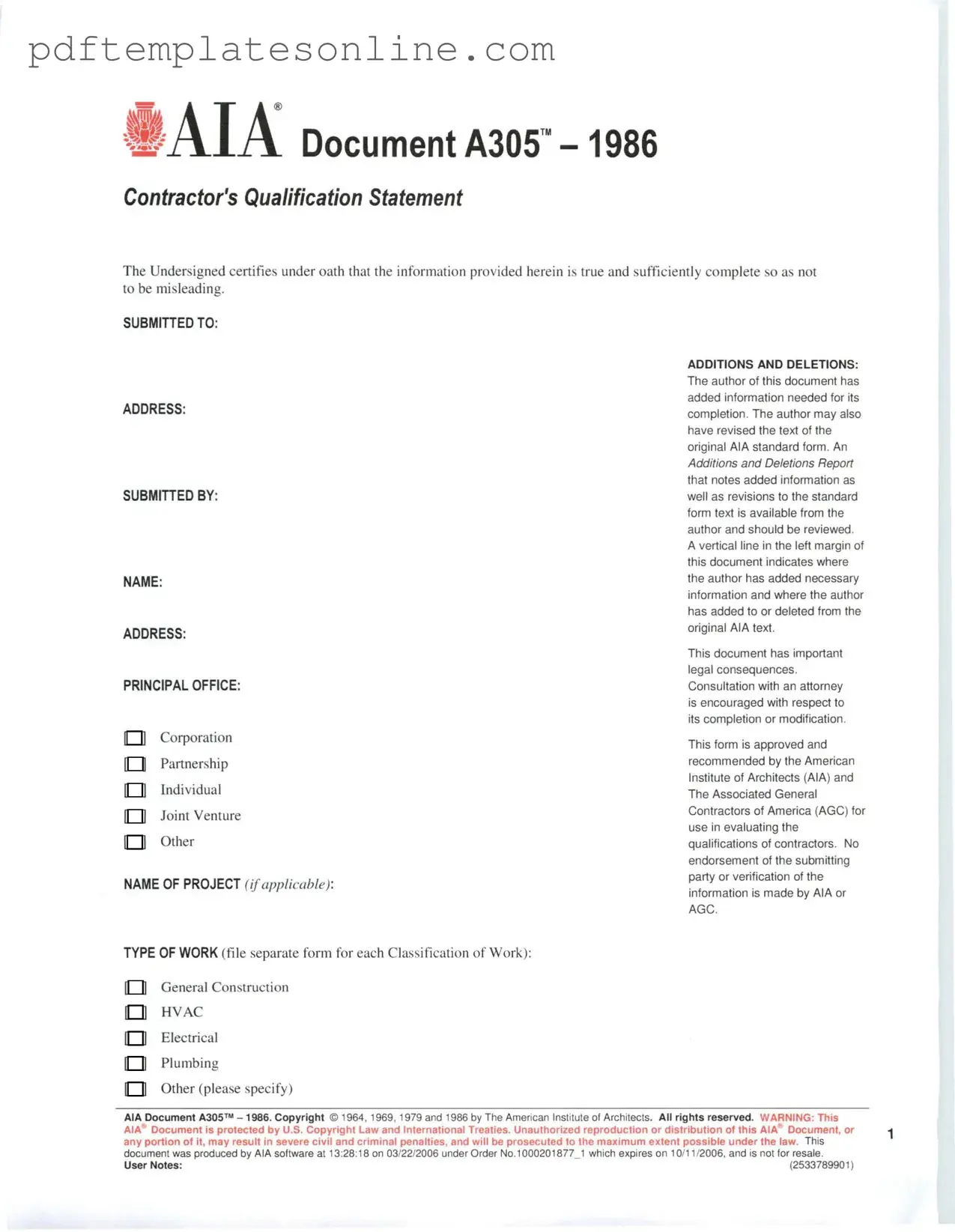Filling out the AIA A305 form can be a straightforward process, but several common mistakes can lead to issues. One frequent error is failing to provide complete information. Each section of the form requires specific details. Omitting important data can cause delays in processing or even rejection of the form.
Another common mistake is not updating the form with the most current information. Many people use old versions of the form or forget to revise sections that may have changed since their last submission. This can lead to discrepancies that complicate matters.
Inaccurate financial statements are also a significant issue. Some individuals may not double-check their numbers before submission. Errors in financial data can raise red flags and result in further scrutiny from the reviewing party.
Additionally, many people overlook the importance of signatures. The AIA A305 form requires signatures from specific individuals. Failing to obtain the necessary signatures can render the form invalid.
Another mistake involves not reading the instructions carefully. Each section of the form has guidelines that need to be followed. Ignoring these instructions can lead to incomplete or incorrect submissions.
Some individuals also fail to provide supporting documentation. The AIA A305 form often requires additional documents to substantiate the information provided. Neglecting to include these can lead to a lack of credibility in the application.
Finally, individuals sometimes submit the form without reviewing it thoroughly. A quick glance may not catch all the mistakes. Taking the time to review the completed form can prevent many issues down the line.
